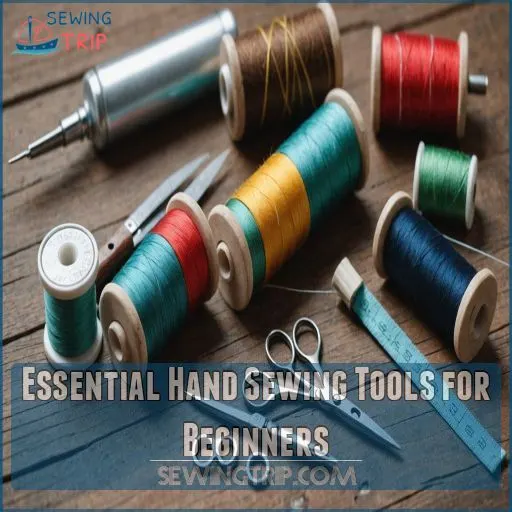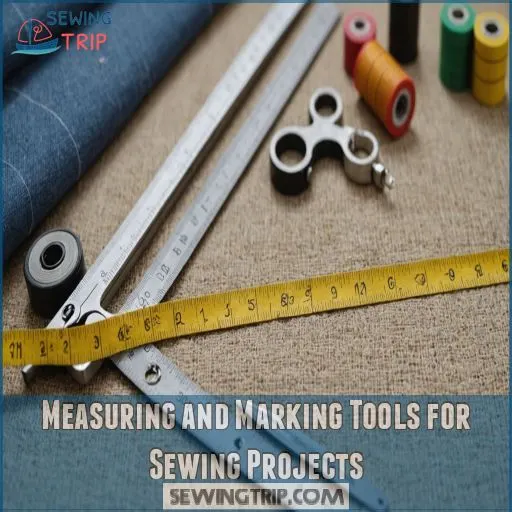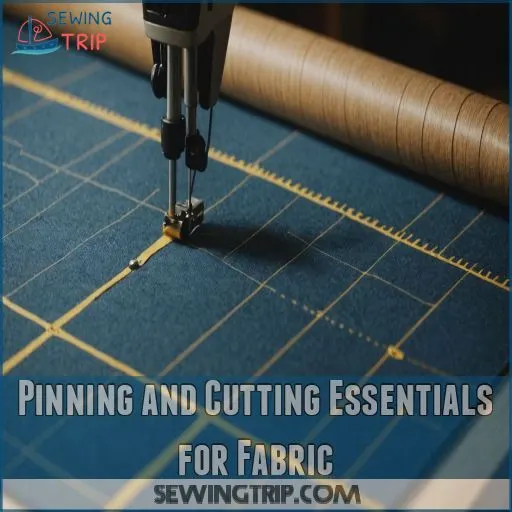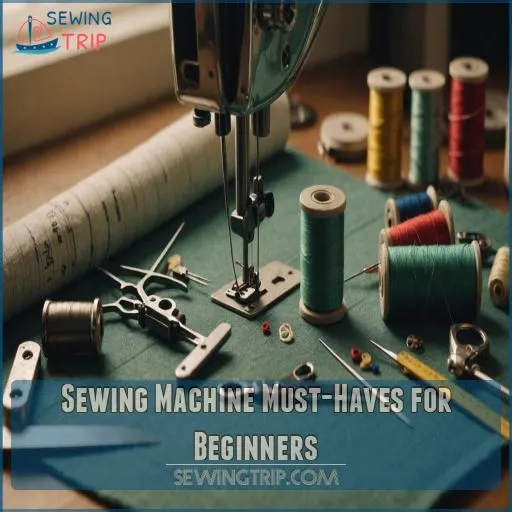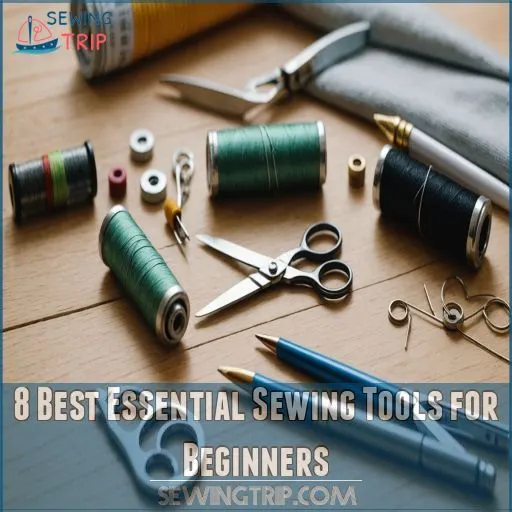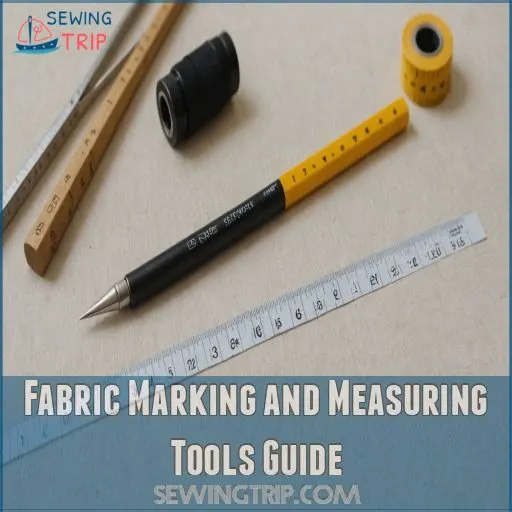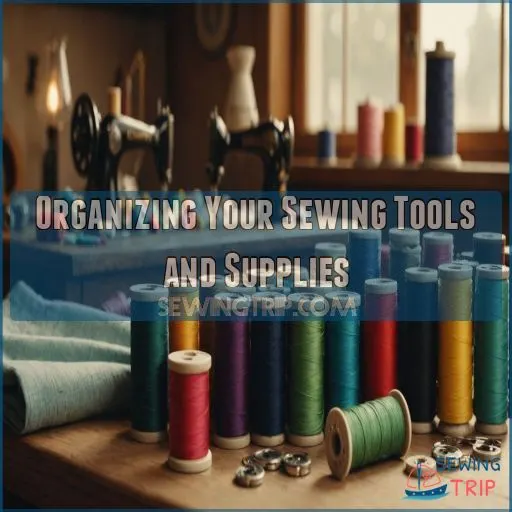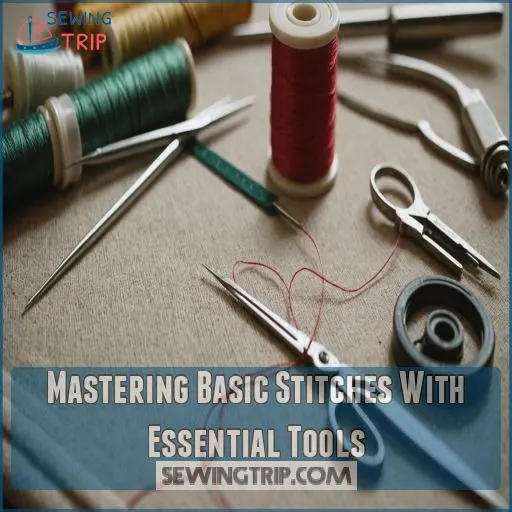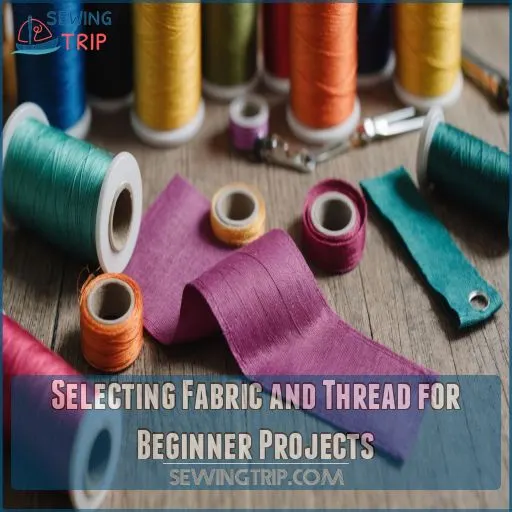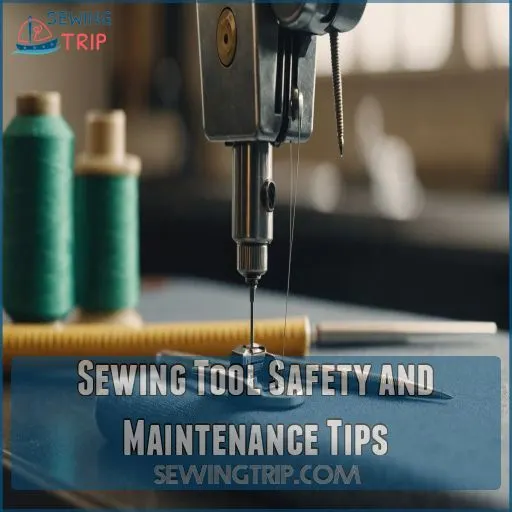This site is supported by our readers. We may earn a commission, at no cost to you, if you purchase through links.
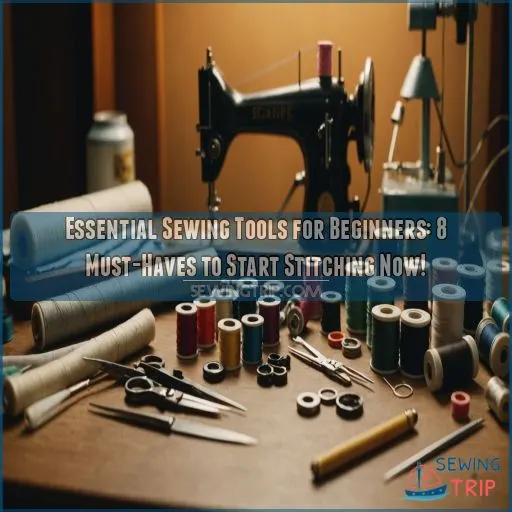
As a beginner, you need to have the right tools for the job. We’re talking about the must-haves that’ll make your sewing journey a whole lot easier.
Think of it like building a house – you need a solid foundation, right? For sewing, that foundation includes essential tools like good-quality needles, threads, fabric scissors, pins, and a sewing machine (if you’re feeling fancy).
With these basics under your belt, you’ll be stitching like a pro in no time. But, what else do you need to know to take your sewing to the next level?
But, to have a solid foundation, you have to know what you’re doing, and how to use these tools to get the results you want.
Table Of Contents
- Key Takeaways
- Essential Hand Sewing Tools for Beginners
- Measuring and Marking Tools for Sewing Projects
- Pinning and Cutting Essentials for Fabric
- Sewing Machine Must-Haves for Beginners
- 8 Best Essential Sewing Tools for Beginners
- Fabric Marking and Measuring Tools Guide
- Organizing Your Sewing Tools and Supplies
- Mastering Basic Stitches With Essential Tools
- Selecting Fabric and Thread for Beginner Projects
- Sewing Tool Safety and Maintenance Tips
- Frequently Asked Questions (FAQs)
- Conclusion
Key Takeaways
- You don’t need to break the bank to get started with sewing – invest in a few essential tools, such as good-quality needles, threads, fabric scissors, pins, and a sewing machine, and you’ll be stitching like a pro in no time.
- Having the right fabric-marking and measuring tools is key to getting accurate cuts and professional-looking results – consider investing in a tracing wheel, seam gauge, and measuring tape to make your sewing projects a breeze.
- Don’t be afraid to get creative with your sewing tools – a die-cutting tool, for example, can be a game-changer for adding intricate details to your projects, and a rotary cutter and mat can revolutionize your fabric-cutting game.
- Remember, practice makes perfect, so don’t be too hard on yourself if things don’t turn out as expected at first – with these essential sewing tools and a bit of patience, you’ll be well on your way to creating beautiful projects that you can be proud of.
Essential Hand Sewing Tools for Beginners
Ready to start your sewing journey?
Let’s explore the essential hand sewing tools you’ll need to bring your creative ideas to life.
From versatile needles to handy thimbles that’ll keep your fingers safe as you stitch.
Hand Sewing Needles
For hand sewing, needles are the name of the game.
You’ll want to stock up on a variety of types, including Sharps for general sewing, Ballpoints for knits, and Betweens for quilting.
Sizes range from 1 (largest) to 12 (smallest), so choose based on your fabric and thread thickness.
Don’t forget to replace them when they lose their sharpness – your fingers will thank you!
Needle Threaders
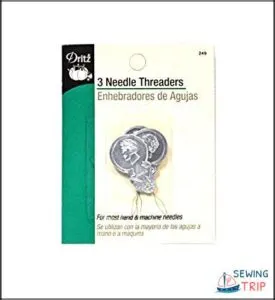
You’ve mastered threading needles, but let’s face it – sometimes those tiny eyes can be a real pain!
Enter needle threaders, your new best friend in the sewing world.
These nifty tools come in various types, from simple wire loops to fancy LED-lit gadgets .
Whether you’re working with a sewing machine or hand-stitching, a good threader can save your eyes (and sanity) when dealing with stubborn needles.
Beeswax for Thread
Beeswax is the unsung hero of your sewing kit.
This little wonder works magic on your thread, making it glide through fabric like a hot knife through butter.
Just run your thread over the beeswax a couple times, and voilà! You’ve got stronger, tangle-resistant thread that’s perfect for hand-sewing buttons or tackling tricky fabrics .
It’s like giving your thread a superhero costume!
High-Quality Thread
Now that you’ve got your beeswax, let’s talk thread! High-quality thread is the unsung hero of your sewing kit. It’s like the secret sauce that holds everything together. Don’t skimp here – invest in good thread and your projects will thank you.
Look for these key features:
- Smooth texture for easy stitching
- Strong fibers to prevent breakage
- Consistent thickness for even tension
Remember, the right thread can make or break your sewing adventure.
Thimble for Finger Protection
For protecting your fingers from needle pricks, a thimble is your best friend.
These nifty little shields come in various types, from classic metal to flexible leather (Source).
Finding the right fit is important – you want it snug but not too tight.
Once you’ve found your perfect match, you’ll wonder how you ever sewed without one!
Measuring and Marking Tools for Sewing Projects
You can’t sew without knowing where to stitch, and that’s where measuring and marking tools come in handy.
They help you measure twice and cut once, ensuring your sewing projects turn out just right.
Measuring Tape
You’ve got your needles and thread, now let’s talk about keeping things in proportion.
A good measuring tape is your secret weapon for nailing those perfect fits. Look for one that’s flexible, easy to read, and has both inches and centimeters.
Singer’s retractable tape measure is a popular choice, compact enough to slip into your pocket.
Remember, accuracy is key for sewing – measure twice, cut once!
Tailors Chalk
Tailors chalk is your fabric’s best friend for marking patterns and hemlines . It’s like leaving a secret code on your fabric that only you can see!
- Yellow: Shows up on most fabrics
- White: Great for dark materials
- Red: Use cautiously on light fabrics
- Blue: Perfect for temporary marks
Remember to keep your chalk sharp for those fine, accurate lines. It’s the unsung hero of your sewing kit!
Fabric Pencils
Fabric pencils are your secret weapon for precision marking. They’re like the cool cousins of tailor’s chalk, offering sharper lines and easier erasability.
You’ll find various types, from ceramic to soapstone, each with its own superpowers.
White pencils are fantastic for dark fabrics, while colored ones shine on lighter materials. Remember to test before you commit – you don’t want any unwelcome surprises on your masterpiece!
Seam Gauge
If you want to get precise seams, a seam gauge is your new best friend.
This handy tool helps you maintain consistent seam allowances, whether you’re stitching a 5/8" garment seam or a scant 1/4" for quilting.
Simply place it on your sewing machine plate or mark your fabric for spot-on accuracy.
It’s like having a mini ruler always at your fingertips!
Tracing Paper and Wheel
These unsung heroes of pattern transfer will become your new best friends!
Tracing paper and wheels let you precisely copy markings onto fabric without damaging your patterns .
Simply sandwich the paper between your pattern and fabric, then roll the wheel along the lines.
You’ll get neat little pinpricks that guide your cutting and sewing.
It’s like connect-the-dots for grown-ups, but way more fashionable, and with tracing paper it’s a breeze!
Pinning and Cutting Essentials for Fabric
You’re about to learn the secrets of fabric manipulation with the right pinning and cutting tools.
These essentials will help you tame even the trickiest textiles, making your sewing projects a breeze from start to finish.
Straight Pins and Pin Cushion
You’ve measured and marked, now it’s time to pin! Straight pins are your fabric’s best friends, holding pieces together as you work your magic.
A good pin cushion keeps these little helpers close at hand. Here’s what you need to know:
- Glass head pins are versatile and won’t melt under your iron
- Ball-point pins are perfect for knits, preventing snags
- Magnetic pin cushions make cleanup a breeze (but keep them away from your machine!)
- T-pins are great for tough fabrics and upholstery projects
Fabric Scissors
Now that you’ve got your pins sorted, let’s cut to the chase – fabric scissors! These aren’t your ordinary kitchen snips.
A good pair of fabric scissors is like a trusty sidekick in your sewing adventures. Look for sharp, durable blades that’ll slice through fabric like butter.
Brands like Gingher and Kai are excellent choices that’ll make you feel like a cutting pro .
Rotary Cutter and Mat
With a flick of the wrist, you’ll revolutionize your fabric cutting game using a rotary cutter and mat.
This dynamic duo offers precision and speed, making it a go-to for quilters and sewists alike.
Choose a comfortable ergonomic cutter like the yellow Olfa (Source), and pair it with a self-healing mat to protect your work surface.
Remember, a quality mat can make all the difference in preserving your blade’s sharpness.
Pinking Shears
Pinking shears are your secret weapon against fraying fabric edges.
These zigzag-cutting scissors create a serrated edge that resists unraveling, perfect for beginners without a serger.
They’re not just functional; pinking shears can add whimsical flair to your projects, like creating playful flower edges or adding dimension to landscape quilts.
Plus, they’re a quick way to finish seams when you’re in a hurry.
Ready to give your fabric some tooth?
Safety Pins and Clip Pins
After mastering straight pins, you’ll want to add safety pins and clip pins to your sewing arsenal.
These handy tools are like the superheroes of the pinning world! Safety pins are great for quick fixes and basting, while clip pins shine when working with thick fabrics or multiple layers.
They’re a dynamic duo that’ll make your sewing projects a breeze.
Sewing Machine Must-Haves for Beginners
Ready to start your sewing journey?
Let’s explore the essential sewing machine must-haves that’ll set you up for sewing essentials success
.
From choosing the right beginner-friendly machine to stocking up on needles, bobbins, and maintenance tools.
Choosing a Beginner-Friendly Sewing Machine
Choosing your first sewing machine can feel like a big task, but don’t worry.
You don’t need all the bells and whistles to get started.
Look for a machine with a solid straight stitch and the ability to drop your feed dogs – that’s all you really need for quilting and basic projects.
For young sewers, a less complex machine like the Brother XM2701 is perfect.
Sewing Machine Needles
Now that you’ve got your machine, let’s talk needles. They’re the unsung heroes of your sewing adventures. Think of them as tiny knights, battling through fabric to create your masterpieces.
You’ll want to keep a variety on hand:
- Universal needles for everyday sewing
- Ballpoint needles for stretchy fabrics
- Denim needles for tough materials
- Microtex needles for delicate fabrics
Remember, a fresh needle is like a sharp mind – it’ll make your sewing smoother and more enjoyable!
Bobbins and Presser Feet
Why are bobbins and presser feet so important for your sewing adventures? These tiny powerhouses can make or break your projects!
You’ll need to master bobbin winding and tension for smooth stitching.
As for presser feet, they’re your fabric’s best friends. From zippers to buttonholes, there’s a foot for every job . Don’t be afraid to swap them out – it’s like giving your machine superpowers!
Machine Oil and Maintenance Tools
Your sewing machine’s happiness depends on regular TLC! Keep it purring with these maintenance must-haves:
- Quality machine oil (like Madeira White) for smooth operation
- Soft cloths for dusting and cleaning
- Small brushes to reach tight spots
Remember, a well-oiled machine is a happy machine! Set a cleaning schedule every 2-3 bobbins to keep your stitches flawless. It’s like giving your trusty sidekick a spa day – everyone wins!
8 Best Essential Sewing Tools for Beginners
Ready to start your sewing journey?
Let’s explore the 8 essential tools that’ll set you up for success, from nifty needle threaders to versatile measuring tapes.
These must-haves will have you stitching like a pro in no time, so grab your scissors and let’s get started!
1. Dritz Needle Threaders 3 Pack Silver

Threading needles can be a frustrating task for many sewers, but the Dritz Needle Threaders 3 Pack Silver is here to save the day!
These nifty little tools are a game-changer for beginners and experienced crafters alike.
With their simple wire loop design, you’ll be threading needles in a snap . They work well with most hand and machine needles, making them versatile for various projects.
While they’re not indestructible, their affordability and multi-pack option mean you’ll always have a backup on hand. Say goodbye to squinting and hello to smoother sewing sessions!
They are also a great value with their affordability.
Best For: The Dritz Needle Threaders 3 Pack Silver is best for anyone who struggles with threading needles, especially beginners and those who sew frequently.
- Quick and easy threading: Makes threading a breeze.
- Versatile: Works with most hand and machine needles.
- Affordable and multi-pack: Provides value and backups.
- Delicate wire loop: Can break with heavy use.
- May not be strong enough for heavy-duty threading: Not ideal for thick or stiff threads.
- Some prefer larger, plastic threaders: Personal preference for size and material.
2. Dritz Beeswax for Quilting Thread
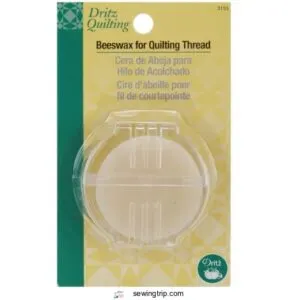
Beeswax thread conditioner is a quilter’s secret weapon for smooth sailing through hand sewing projects.
Dritz Beeswax for Quilting Thread comes in a handy plastic case, allowing you to wax threads without removing the wax itself . This little powerhouse prevents tangling, reduces fraying, and strengthens your thread.
It’s like giving your thread a protective shield against the perils of high-friction sewing. While it’s a game-changer for natural fibers like cotton or linen, you can use it on synthetic threads too. Just remember, it’s not meant for machine sewing – keep this gem for your hand-stitching adventures.
It’s a game-changer for natural fibers like cotton or linen. Also, the product is a little powerhouse that prevents tangling, reduces fraying, and strengthens your thread.
Best For: This is a must-have for quilters, embroiderers, and anyone who loves hand sewing.
- Prevents thread tangling and makes threading needles easier.
- Strengthens thread and reduces fraying.
- Comes in a convenient plastic case for easy application.
- Can be difficult to remove wax from beads if the thread needs to be removed.
- Not suitable for machine sewing.
- May not be effective on all types of thread.
3. Clover Tracing Paper Roll
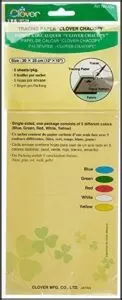
When you’re ready to transfer patterns onto fabric, Clover tracing paper is your go-to tool.
This multi-colored paper creates clear, visible lines that’ll make your sewing projects a breeze . While some sewers find it less permanent than waxed alternatives , it’s perfect for beginners who might need to make adjustments.
The paper’s reusability is a bonus, though keep in mind the lines may fade with repeated use.
Don’t worry if you’re working on smaller projects – the 13" x 5.25" size is just right for most tasks, making it a great choice for your sewing projects and allowing you to work with clear, visible lines.
Happy tracing!
Best For: Beginners and smaller projects where clear, visible lines are essential.
- Creates clear, visible tracing lines.
- Reusable, though lines may fade with repeated use.
- Convenient size for most projects.
- May not be suitable for larger projects.
- Some users reported difficulty transferring lines onto fabric, especially with colors other than blue.
- Lines may be difficult to remove from painted surfaces.
4. Singer 60 Inch Tape Measure
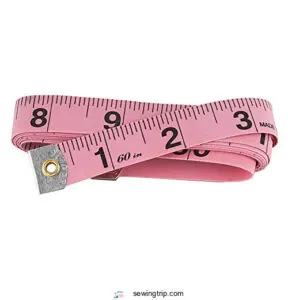
If you’re serious about sewing, you’ll need a reliable tape measure, and the Singer 60 Inch Tape Measure is a fan favorite.
This pink beauty isn’t just easy on the eyes; it’s designed for accuracy and durability.
With bold, easy-to-read numbers in both inches and centimeters, you’ll be measuring like a pro in no time . Its flexible vinyl material makes it perfect for wrapping around curved surfaces or laying flat for straight measurements.
Plus, it’s compact enough to tuck away in your sewing kit. Don’t be surprised if you find yourself reaching for it even outside your sewing projects!
Best For: This tape measure is best for sewers who need an accurate and durable tool for measuring fabric and other sewing supplies.
- Durable and flexible vinyl material
- Easy-to-read bold numbers in both inches and centimeters
- Compact and easy to store
- Can stretch over time
- Primarily marketed for sewing, but can be used for a variety of purposes
- No specific statistics are provided
5. Clover Sliding Gauge with Nancy Zieman
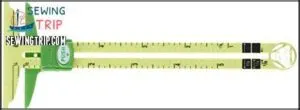
In the midst of your sewing adventures, the Clover Sliding Gauge with Nancy Zieman is a game-changer.
This versatile tool is like the Swiss Army knife of sewing, offering multiple functions in one compact package . You’ll love its ability to flawlessly measure hem lines, mark seam allowances, and create perfect circles or arcs.
With 1/8 inch increments up to 6 inches, you can set precise measurements for buttonholes and more. The locking cursor guarantees accuracy, while the T-square feature allows simultaneous length and width measurements.
It’s a must-have for beginners and pros alike.
Best For: This Clover Sliding Gauge is ideal for sewers of all skill levels, from beginners to seasoned pros.
- Offers multiple functions in one compact package, making it versatile for a variety of crafting needs.
- Locks into place to ensure accurate measurements.
- Features a T-square for simultaneous length and width measurements.
- The circle compass hole may be too small for some pens.
- The gauge is made of plastic, which could potentially snap if excessive force is applied.
- Some users wish the compass hole were larger.
6. Omnigrid Quilter’s Ruler 6×24 Neon Green

You’re getting serious about sewing, and accuracy is key. That’s where the Omnigrid Quilter’s Ruler 6×24 Neon Green comes in.
This ruler’s non-slip backing and neon green markings make it easy to use on light and dark fabrics.
With 1/4, 1/2, and 3/4 inch markings, you’ll be cutting like a pro in no time. It’s a worthy investment for any beginner.
Its durability will make it a staple in your sewing kit. Trust us, you won’t regret it.
Best For: This ruler is perfect for quilters, sewers, and crafters who need precise cuts and clear markings.
- Non-slip backing prevents shifting while cutting.
- Neon green lines provide high visibility on any fabric.
- Durable material ensures long-lasting use.
- May be more expensive than other rulers.
- Some users prefer black and white lettering for better contrast.
- Uses inches, not centimeters, which may not be ideal for all users.
7. Singer Pearlized Head Straight Pins
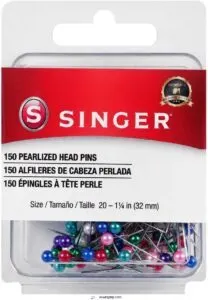
Your sewing kit isn’t complete without the Singer Pearlized Head Straight Pins. These nickel-plated steel pins are designed for durability and rust prevention, and their multicolored heads make them easy to spot on patterned fabrics.
With 150 pins in a pack, you’ll have plenty for your projects.
While some users found them rough to use, many praised their ease of use and colorful design. They’re a great addition to your sewing tools and supplies.
Best For: These pins are best for sewers who need a durable, rust-resistant pin with a colorful head for easy visibility.
- Durable and rust-resistant.
- Colorful heads make them easy to spot.
- Good value for the price.
- Some users found them rough to use.
- Some pins may be defective.
- They can be prone to bending.
8. Marianne Design French Lamp Post Die

A die-cutting tool like the Marianne Design French Lamp Post Die may seem unexpected in a sewing toolkit, but it’s a game-changer for adding intricate details.
When choosing any sewing tool, you should invest in quality and research reliable brands known for longevity and user-friendly features, such as those found in sewing machine essentials.
You can use it to create custom embellishments, from lamp posts to flowers, or even intricate designs that require precise cutting, which is where a sharp, high-quality fabric scissor comes in handy.
Although not a traditional sewing tool, it opens up creative possibilities. Imagine adding a personalized touch to your garments or home decor projects – it’s a great way to express your unique style and take your sewing to the next level.
Best For: This tracing wheel is perfect for sewers and crafters who need to transfer patterns onto fabric or paper.
- Ergonomic design for comfortable use.
- Serrated edges create crisp, defined holes.
- Safe on all but the most delicate fabrics.
- The price may be considered high by some.
- Some users prefer the blunt tip tracing wheel for use with tracing/transfer paper.
- There are other similar tracing wheels available on the market.
Fabric Marking and Measuring Tools Guide
Getting accurate cuts and professional-looking results is really important, and having the right fabric marking and measuring tools is key.
In this guide, you’ll learn about the different types of tools you’ll need to measure and mark your fabric like a pro, from tracing wheels and paper to seam gauges and measuring tapes.
Types of Fabric Marking Tools
Fabric marking tools can feel like a whole jungle out there.
- Chalk and chalk pens for temporary marks
- Fabric pencils and markers for more permanent lines
- Hera markers for creating invisible crease lines
- Soapstone markers for dark fabrics
Choose the right tool for your project.
Choosing the Right Measuring Tape
Now that you’ve got your fabric marking tools down, it’s time to talk measuring tapes.
A good measuring tape is all about accuracy and ease of use.
| Tape Type | Features |
|---|---|
| Retractable | Easy storage, often with a clip or hook |
| Flexible | Can be bent to measure curves and angles |
| Rigid | Best for measuring straight lines and edges |
Look for a tape that’s at least 60 inches long and has clear markings for easy reading.
Using Seam Gauges Effectively
To get precise sewing, you’ll want to use a seam gauge effectively. This handy tool helps you get accurate measurements, saving you frustration and rework.
- Use it to mark seam allowances on your sewing machine with washi tape
- Choose the right gauge type for your project, such as a magnetic seam gauge
- Keep it handy to double-check seam allowances throughout your project
Tracing Wheels and Paper Techniques
One essential tool to master is the tracing wheel, a game-changer for transferring patterns onto fabric accurately.
Choose carbon paper that contrasts your fabric, and use a ruler for straight lines. For smaller markings, use chalk or removable pens.
Practice makes perfect – give it a try!
Organizing Your Sewing Tools and Supplies
As you start building your sewing tool collection, you need to think about how you’ll keep everything organized and within reach.
By investing in a few simple storage solutions and developing good habits for maintaining your tools, you’ll be able to focus on what really matters – creating amazing sewing projects.
This approach will allow you to stay focused on the task at hand and make the most of your time, ultimately leading to a more enjoyable and productive sewing experience, and being able to focus on what really matters.
Sewing Kits for Beginners
You’ve mastered fabric marking and measuring – now it’s time to get organized.
Consider investing in a sewing kit for beginners, which usually includes must-haves like needles, threads, and scissors.
Look for kits with variety, like the Retro wooden sewing kits or the Sturme Starter Sewing Kit , to make sure you’re covered for any project.
Storage Solutions for Sewing Supplies
Now that you’re all set with a basic sewing kit, it’s time to think about storage solutions for your sewing supplies
.
Consider repurposed storage containers like old jars or tins to store small items like buttons and threads . You can also invest in a tackle box or a set of clear plastic drawers for a more organized sewing space , which will provide you with a more organized sewing space.
Keeping Tools in Good Condition
Your sewing space is organized, but how do you keep your tools in top shape?
Regular cleaning and maintenance are key to extending their lifespan.
Use a soft cloth to wipe down your sewing machine and tools, and sharpen scissors and rotary cutters regularly.
Store tools in a dry, cool place to prevent rust and damage.
Essential Tools to Keep on Hand
A well-organized sewing space is key to productivity and stress-free stitching. Invest in essential tools like a tackle box to store small notions and clear plastic bins for fabric storage.
Consider a pegboard for hanging tools and supplies or a rolling cart for easy access to your sewing kit essentials.
Mastering Basic Stitches With Essential Tools
Mastering basic stitches is a key step in your sewing journey, and having the right tools can make all the difference.
You’ll be able to focus on perfecting your technique rather than struggling with subpar equipment.
With the essential hand sewing and machine sewing tools, including a variety of sewing machine accessories, you’ll be well on your way to creating beautiful, professional-looking projects that you can be proud of
.
Straight Stitch Techniques
With your sewing space organized, it’s time to master the basic stitches.
The straight stitch is a great place to start. To sew a straight stitch by hand, knot your thread to the fabric, then weave the needle in and out in a straight line.
Adjust stitch length and tension as needed for a secure seam.
Zig-Zag Stitch Applications
Mastering the zig-zag stitch is a game-changer for beginners.
This versatile stitch prevents fraying, secures seams, and finishes hems beautifully.
To achieve a professional finish, use a wide stitch width and small stitch length, and sew close to the stitching line, leaving a bit of fabric to trim afterwards, ensuring a professional finish .
Basting and Temporary Stitches
Now that you’ve got the zig-zag stitch down, let’s talk about basting and temporary stitches.
These stitches are your new best friends for holding layers of fabric together or creating guidelines.
You can baste by hand using a long running stitch or by machine with a longer stitch length, generally 4 or 5 , which is a useful long running stitch.
Hand Sewing Vs. Machine Sewing Tools
You’ve got the hang of basting and temporary stitches – now it’s time to explore hand sewing and machine sewing tools, especially when choosing the right sewing machine features
.
- Hand Sewing Needles: Durable and versatile for various projects .
- Machine Sewing Needles: Designed for specific needle types and sizes and machines
.
- Thimble: Protect your fingers from needle pricks .
- Seam Ripper: Easily undo mistakes and start anew .
Selecting Fabric and Thread for Beginner Projects
As a beginner sewer, you’re probably wondering what fabrics and threads to use for your first projects – and that’s a great question.
Choosing the right fabric and thread can make all the difference in the quality and look of your finished projects, so let’s take a closer look at what you need to know.
Choosing Appropriate Fabrics
When choosing fabrics for your beginner projects, consider factors like fabric weight, texture, care, drape, and color.
Look for stable, tightly-woven fabrics like medium-weight linen, cotton lawn, or cotton voile.
These fabrics are easy to cut, sew, and press, making them perfect for building your sewing confidence.
Matching Thread to Fabric Types
The perfect match: pairing thread with fabric.
To find the ideal thread, consider the fabric’s weight, texture, and color.
- Thread weight: Match the thread weight to the fabric’s weight – heavier fabrics require heavier threads .
- Fabric texture: Smooth threads work best with smooth fabrics, while textured threads complement rougher fabrics.
- Thread color: Choose threads that blend with the fabric’s color to create a seamless look.
Understanding Thread Weights and Sizes
Choosing the right thread involves understanding thread weights and sizes.
A lower thread weight number means a thicker thread, while a higher number indicates a thinner thread.
Refer to a thread weight chart or thread size guide to select the perfect thread for your project.
Sewing Tool Safety and Maintenance Tips
To keep your sewing journey safe and enjoyable, you need to handle your tools with care and maintain them regularly.
By following a few simple tips, you’ll be able to prevent accidents, extend the life of your tools, and make sure your sewing projects turn out beautifully.
Proper Handling of Sharp Tools
Now that you’ve got your fabric and thread ready, let’s talk about safety – specifically, handling those sharp sewing tools.
To avoid accidents, follow these simple tips:
- Cut away from your fingers and hands .
- Store scissors and rotary cutters properly when not in use .
- Use the right tool for the job to avoid damage and injury.
- Keep your tools sharp to maintain control and prevent accidents.
Cleaning and Storing Sewing Tools
You’ve mastered handling sharp tools, now it’s time to keep them in top shape.
Clean and store your sewing tools properly to maintain their effectiveness.
Use a soft cloth to wipe down scissors and rotary cutters, and store them in a dry place.
Consider a tackle box or clear plastic bins for organization .
When to Replace Worn-Out Tools
Your trusty sewing tools won’t last forever.
Know when to replace them by watching for signs of wear, such as dull blades or loose parts.
If a tool’s performance affects your projects or poses safety concerns, it’s time to upgrade.
Weigh the cost of replacement against the value of your time and project quality .
Sharpening Scissors and Rotary Cutters
Replacing worn-out tools is just the beginning – keeping them sharp is where the real magic happens.
To sharpen your scissors and rotary cutters, try DIY techniques like using a sharpening jig or abrasive paper . For rotary cutters, a butcher’s steel can also work wonders.
Always prioritize safety and exercise caution when handling sharp tools.
Frequently Asked Questions (FAQs)
What basic sewing equipment do I need?
Sewing is a skill that over 100 million people worldwide have mastered.
To get started, you’ll need basic equipment like a sewing machine, sharp fabric scissors, measuring tape, pins, and a seam ripper.
What are the 6 most important hand sewing tools for beginners?
Master hand sewing with these must-haves: sharp needles (size 10-12 for fine fabrics) , fine dressmaker pins (1 1/4" long) , thimble, pencil, straight edge, measuring device, and a seam ripper.
What do you need in a beginners sewing kit?
To start sewing, you’ll need a solid foundation of basic tools.
You’ll want a flexible measuring tape , a seam gauge for even hems (Source).
A seam ripper for mistakes, and hand needles for finishing details.
What is the first thing a beginner should sew?
77% of sewers report feeling happier and less stressed.
Did you know this is the case?
Start your sewing journey with a simple pillow project, a great confidence booster, or a reusable sandwich wrap , easy and fun to make.
What is curved piecing in quilting and sewing?
You’re ready to take your quilting skills to the next level with curved piecing. Basically, it’s sewing curved seams together , requiring patience, gentle stretching, and accurate cutting with seam allowance.
How do I use a projector for sewing patterns?
Using a projector for sewing patterns saves time and space, as you can project patterns directly onto fabric.
It’s great for pattern matching and cutting multiple sizes, but requires the right PDF file and setup.
Can I draw smooth curves without a French curve?
No need for a French curve to draw smooth curves.
You can use a regular patternmaking ruler or even print out curves on paper or cardstock and cut them out, like this.
Why is starching fabric important for beginners?
Starching fabric gives it a paper-like quality, making it easier to cut and piece accurately.
It’s essential for beginners as it helps prevent fraying and distortion, resulting in a more polished finish.
How do I ensure accurate cutting with a rotary cutter?
You’re just a snip away from accurate cutting with a rotary cutter.
To start, make sure your ruler is aligned with the fabric’s edge and the cutting mat’s grid.
Then keep your wrist straight and cut.
Conclusion
Don’t let the initial investment in essential sewing tools for beginners scare you off – it’s a one-time splurge that’ll save you frustration and money in the long run.
Now that you know what you need to get started, take the leap and start sewing. With these must-haves, you’ll be well on your way to creating beautiful projects.
Remember, practice makes perfect, so don’t be too hard on yourself if things don’t turn out as expected at first. Happy stitching!

